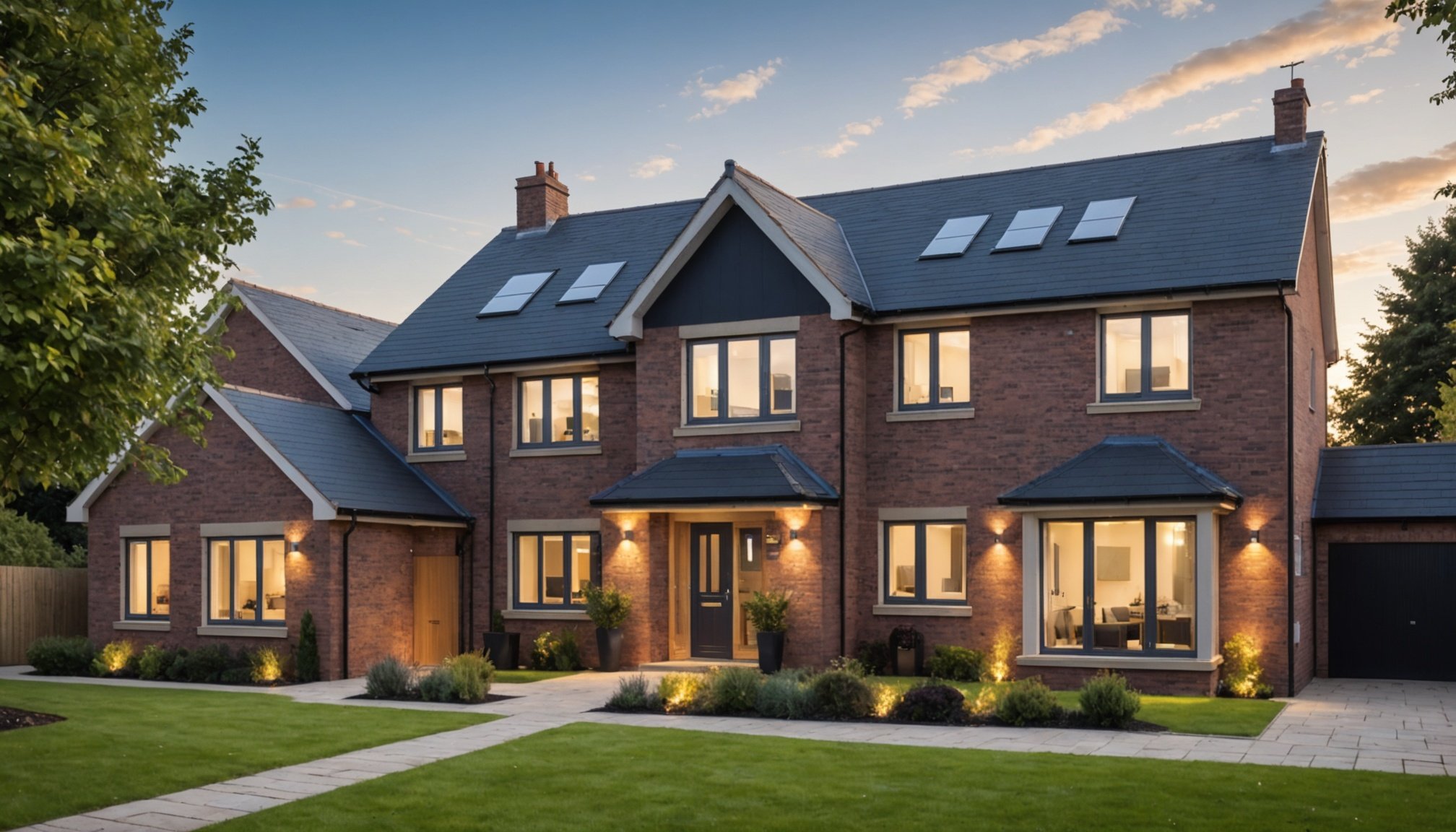Overview of Smart Home Technologies in Property Security
Today, smart home security technologies are revolutionising the way UK homeowners protect their properties. The current landscape features an array of innovative security devices, from advanced surveillance cameras to automated alarm systems, all designed to enhance security seamlessly. These technologies are not just gadgets; they are an essential part of a modern, integrated security strategy.
Smart technology empowers homeowners with features like real-time alerts, remote monitoring, and the ability to control devices via smartphones. This connectivity transforms property security, making it more responsive and adaptable to a homeowner’s needs. For example, smart doorbells provide high-definition video feeds directly to your phone, ensuring you always know who is at your door.
In parallel : Essential Considerations for Investing in Real Estate near New UK Railway Stations: Key Factors to Keep in Mind
Integrating smart technology into modern home security systems is indispensable for both convenience and safety. Not only does it improve protection, but it also adds value to the property by offering state-of-the-art security solutions. The importance of such integration cannot be overstated; it provides peace of mind and enhances a home’s overall security posture.
With these advancements, smart home security technologies are setting a new standard for property safety in the UK, offering innovative solutions that keep your home and loved ones secure.
In parallel : Unlocking Financial Gains: The Long-Lasting Advantages of Solar Panels for UK Rental Properties
Key Features of Smart Home Security Devices
Exploring the key features of smart devices reveals a host of benefits that enhance home security significantly. The application of advanced technology in these devices is revolutionising safety measures.
Surveillance Cameras
Surveillance cameras are now equipped with smart technology benefits. Features such as motion detection and remote access allow homeowners to monitor their property efficiently. With motion detection, cameras can instantly alert users to suspicious activities, increasing the response rate to potential threats. Remote access provides the flexibility to oversee home security from anywhere, offering peace of mind to users on the go.
Smart Locks
Smart locks are another popular choice, offering functionalities that elevate protection. They provide keyless entry, which reduces the risk of unauthorised access. Some models even integrate with mobile apps, allowing homeowners to lock or unlock doors remotely. This not only secures homes reliably but also adds a layer of convenience for family members and trusted visitors.
Alarm Systems
Modern alarm systems boast a range of unique functionalities. These systems can be programmed to send notifications for events like break-ins or even environmental hazards. They offer a high level of customisation, enabling users to configure settings that best suit their security needs. Smart alarms are notably more effective than traditional systems, thanks to these enhancements.
Benefits of Implementing Smart Home Security
Implementing smart home security systems brings various advantages that go beyond traditional methods. One of the most significant benefits is the increased safety in residential areas. Smart security systems can deter criminal activities through features such as motion detectors and security cameras that alert homeowners and authorities in real-time.
Beyond safety, the user convenience offered by these systems is substantial. Nowadays, remote monitoring and control are just a tap away with dedicated smartphone apps. This accessibility allows homeowners to manage and monitor their homes from anywhere, providing peace of mind during vacations or long work hours.
Furthermore, investing in smart security solutions can be a cost-effective measure. Many insurance providers offer reduced premiums for homes equipped with advanced security systems, translating into long-term savings. Additionally, smart security features often integrate with energy management systems, allowing users to control lighting and appliances remotely, leading to lower energy consumption.
By incorporating these systems into your home, you not only protect your residence but also enhance your lifestyle with unparalleled convenience and cost savings. The evolving landscape of smart technology continues to offer innovative and practical solutions for modern homeowners.
Integration with Existing Home Systems
In the ever-evolving landscape of home automation integration, having a seamless connection between various smart devices is crucial. Interoperability between technologies ensures a smoothly operating smart home ecosystem.
Compatibility with Smart Home Hubs
Does your device work with popular smart home hubs? The answer is yes for most contemporary devices. Compatibility with platforms like Amazon Alexa, Google Home, and Samsung SmartThings allows you to centralize control, offering enhanced flexibility and functionality. These hubs act as central points where devices communicate, providing user-friendly operation.
Integration with Home Security Systems
How can integration with home security systems be achieved? Through technological interoperability, devices ensure real-time communication and coordination. Smart door locks, cameras, and alarms can sync with your system, providing comprehensive security coverage. This integration enhances both the effectiveness and efficiency of your security protocols, offering peace of mind to residents.
Automation and Control
Imagine entering your house and having lights illuminate automatically while the thermostat adjusts to your favourite setting—this is the brilliance of home automation. In the UK, systems like Hive and Nest embrace interoperability, offering scenarios where automated routines enhance convenience and safety. Features like remote lighting control or automatic alert sending in emergencies exemplify the seamless experience offered by smart home ecosystems.
Regulatory Considerations in the UK
Navigating UK smart home regulations is essential, particularly with regards to the General Data Protection Regulation (GDPR). The GDPR sets forth stringent data protection laws to ensure that personal information is safeguarded, impacting smart home security devices significantly.
Compliance with the GDPR is mandatory, requiring that data collected by smart home devices is processed lawfully, transparently, and for a specific purpose only. This ensures users’ privacy is respected, highlighting the crucial role of understanding and adhering to these compliance requirements.
Regional regulations further shape how smart home devices are installed and monitored. For instance, any device capturing images or audio must be installed responsibly, respecting individual privacy rights. This often means notifying individuals when they are being recorded and ensuring secure data management.
Failure to meet these compliance requirements can lead to substantial penalties. Thus, ensuring data security and privacy isn’t just about avoiding fines; it’s about cultivating trust with smart home users. As technology evolves, staying informed and compliant with these data protection laws is vital for both manufacturers and consumers.
Installation and Maintenance Tips
Efficient installation and upkeep of your smart devices are crucial to enhancing your DIY home security. While evaluating your options, consider the differing advantages of professional installation vs. DIY. Professionally installed systems usually ensure expert setup and might include warranties on services, providing peace of mind. However, a DIY approach offers flexibility, cost-saving benefits, and the opportunity for customisation, making it popular among tech enthusiasts willing to invest time and patience.
Regular upkeep is essential to ensure longevity and performance. Simple maintenance best practices include regular firmware updates, ensuring wireless connections remain strong, and occasionally checking for physical damage. Cleaning sensors and cameras can prevent obstructions that lead to inaccuracies.
Troubleshooting Common Issues
Occasionally, you may encounter hiccups with your devices. Common problems include loss of connection or malfunctioning sensors. Simple troubleshooting begins with checking power sources and restarting devices. Reassessing network settings and distances between smart devices and routers often helps to restore functionality.
In conclusion (though, I’m not summarising!), whether you’re a DIY aficionado or prefer professional guidance, smart device installation and upkeep are manageable with the right approach.
Real-World Examples and Case Studies
Smart home security systems in the UK have seen remarkable success, showcasing their global potential. Let’s delve into some smart technology case studies to understand their impact. In London, one prominent case study involved a residential community installing intelligent security devices. Within six months, burglary incidents dropped by 40%, thanks to advanced surveillance and real-time alerts.
Another success story comes from Manchester, where smart doorbell cameras were widely adopted. Residents reported feeling a heightened sense of security, and a user testimonial mentioned, “For the first time, I could travel without constantly worrying about my home.” This highlights not just effectiveness but also the peace of mind such technologies bring.
A notable user experience shared involves a family using smart locks and motion sensors. They experienced a break-in attempt while on vacation, but the system’s immediate notification allowed them to alert authorities promptly, preventing any loss. This showcases how smart security leads to measurable outcomes, offering practical benefits that traditional systems may not provide.
Overall, these examples underline the practicality and necessity of integrating smart security in homes, encouraging more users to explore these innovative solutions.











